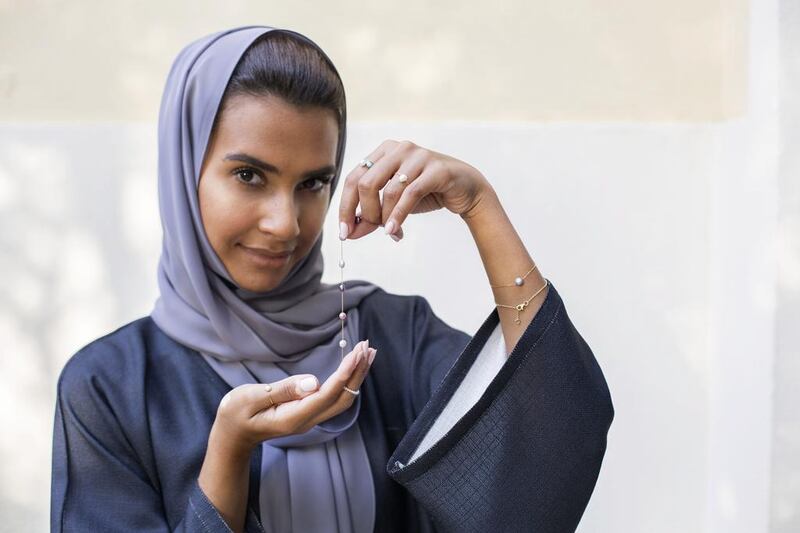For centuries the UAE was renowned for its natural pearls. Harvested from the pristine waters of the Arabian Gulf, they were highly prized around the world for their lustre and quality.
The pearl trade was a pillar of the economy until the discovery of oil, along with the Japanese development of cultured pearls starting in the 1950s, brought an end to that era.
For Salama Mohamed, these water gems remind her of her late grandfather, Mosa Al Qubaisi, who was a pearl diver in the 1940s.
“Whenever we had a family gathering,” she says, “I would play around with the mandoos [a wooden trunk traditionally used by brides to keep their apparel], where my grandpa kept his pearls.”
He also stored black-and-white photographs of his time as a pearl diver, which Mohamed was fond of looking at.
“In one of the old photos, my grandfather is surrounded by his tools and he is busy opening an oyster. As long as I could remember, I loved pearls,” says Mohamed, who also began to collect them as a hobby.
Pearls were a significant source of trade in Roman times and by the 12th century, the towns along the UAE’s coast were important pearling centres, in particular Ras Al Khaimah.
And it was a vital source of seasonal employment for people here. It is thought that by the 19th century, pearl diving accounted for as much as 95 per cent of the region’s income, and by the start of the 20th century, it is believed about 1,200 pearling boats operated from the Trucial States.
It is this connection to the older traditions of the country that inspired the mother of two to launch her jewellery business, Pearl by Salama. “I had a goal when I started. I wanted people to carry a piece of our culture with them on a daily basis.
“The first 100 [pieces] sold out quickly ... Those were from my own collection.”
Mohamed, who is also studying law, designs pearl jewellery – earrings, bracelets, rings and necklaces with a pearl drop pendant.
When she ran out of pearls from her own collection, she turned to a seller in California whom she encountered at a Sunday market, and she now imports her pearls from the United States.
However, with the UAE now producing cultured pearls – this time from a farm in Ras Al Khaimah – she hopes to one day be able to source the gems from here. “I hope to use pearls produced in my country. I am reaching out to people.”
Her Instagram account (@pearlbys) has thousands of followers and people can view and purchase pieces through social media, although she also had a pop-up shop in Abu Dhabi during Ramadan.
“The public were very receptive of my products. And maybe in the next pop-up I will take the time to interact with my customers and share with them my pearl story.”
Today, major fashion brands such as Chanel are incorporating pearls into their designs. Some pieces, depending on the colour and lustre, can cost thousands of dirhams. But not everyone can afford them.
“Frankly, I used to get upset when I see women getting obsessed with branded pearl jewellery. My prices start from Dh300 and reach up to Dh2,000,” she says. For the Emirati, it’s of utmost importance that her pearls are well-priced.
“This way, we’re keeping the tradition alive and, at the same time, passing down the culture to our children. The pearl-diving tradition might have died out, but the history still remains with us.”
Asmaa Al Hameli is a features writer at The National.





